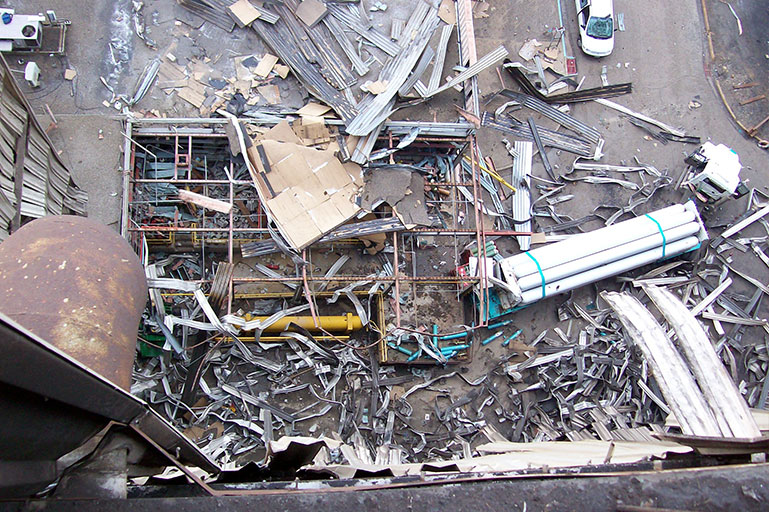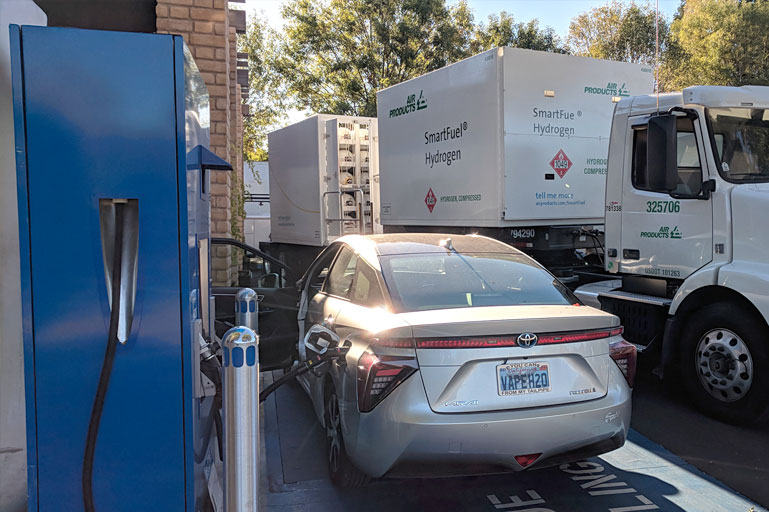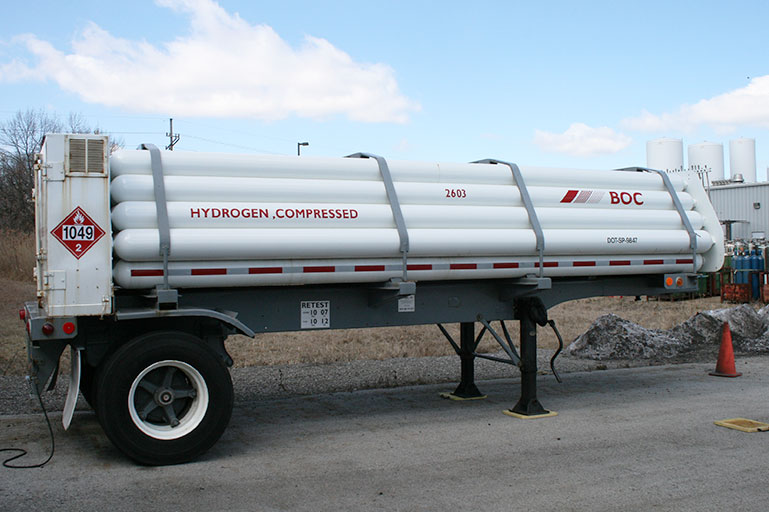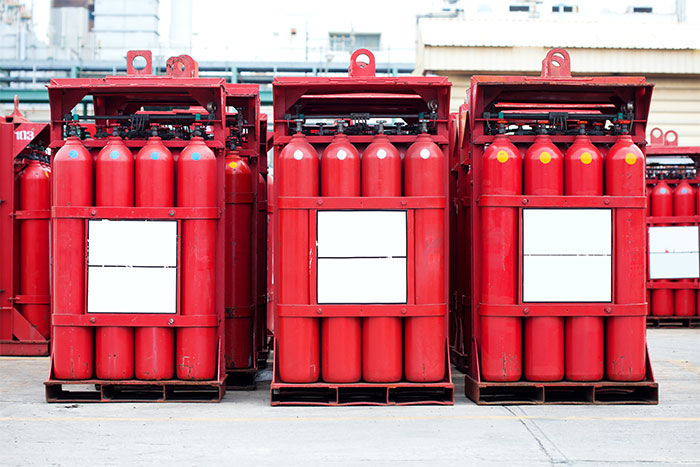Safety in the Fast-Growing Hydrogen Economy
Safety in the Fast-Growing Hydrogen Economy
“A new source of power… called gasoline has been produced by a Boston engineer. Instead of burning the fuel under a boiler, it is exploded inside the cylinder of an engine… The dangers are obvious. Stores of gasoline in the hands of people interested primarily in profit would constitute a fire and explosive hazard of the first rank. Horseless carriages propelled by gasoline might attain speeds of 14, or even 20 miles per hour. The menace to our people of this type hurtling through our streets and along our roads and poisoning the atmosphere would call for prompt legislative action even if the military and economic implications were not so overwhelming…”
Congressional Record, 1875
To us, this 1875 congressional record regarding the commercial use of gasoline might sound humorous, but in 2019, we are actually at another energy crossroads of a similar nature. The “fuel of the future,” indeed represents significant new challenges in safety and public perception. Replace a few words here and there, and this missive could very well be applied to the rise of hydrogen technology today.
Hydrogen gas has been an important part of industry for many decades, but today in the 21st century, the hydrogen economy is experiencing rapid innovation and growth, largely due to hydrogen fuel cell applications. These have been used in specialized applications like space travel for some time, but only recently has the technology become cost-effective for widespread commercial use. This technology represents incredible potential, both in terms of convenient energy storage and reduced environmental impact… but with increased hydrogen use also comes increased risk.
This month, we’re talking with two of WHA’s newest staff members who have specialized experience with hydrogen. Read on to explore what makes hydrogen technology so promising and see how WHA is poised to help industry safely and responsibly participate in the fast-growing hydrogen economy.

What’s in a fuel cell and how is hydrogen involved?
Believe it or not, the first hydrogen fuel cells have been around since 1840s when scientist (and lawyer) William Grove successfully tested his “gas battery.” This first simple device generated an electric current from a reaction between hydrogen and oxygen, and today, the basic principle remains the same.
A big advantage of hydrogen and fuel cells is that the cycle is completely sustainable. “You start with liquid water, and you end with water vapor,” explains Dr. Harold Beeson. Gaseous hydrogen (H2) and oxygen (O2) “want” to chemically join together into water molecules (H2O) through a powerful exothermic oxidation reaction. When done properly in a fuel cell, this reaction releases electric energy we can harness. With a little tweaking, the process is also reversible. By applying energy to water through electrolysis, it can be separated once again into pure oxygen and hydrogen gases.
This special reaction cycle is extremely promising in energy technology for many reasons. First: the cycle can be completely environmentally friendly! Burning fossil fuels is also an energy-rich exothermic reaction, but the hydrocarbon molecules (containing both hydrogen and carbon atoms) react to create water vapor (H2O) AND carbon dioxide (CO2) and carbon monoxide (CO). In fuel cells, hydrogen and oxygen join to create pure water vapor as a byproduct — and nothing else! To complete the zero-emission cycle, renewable energy such as solar and wind can be paired with electrolyzers to produce hydrogen.
As an added benefit, fuel cells are currently twice as efficient as combustion engines, and hydrogen is an excellent way to store energy. By storing hydrogen rather than electricity, energy storage capacity increases significantly when compared to traditional battery technology. Unlike batteries, hydrogen does not lose energy over time and its versatility presents a promising backup energy solution for individual buildings and even large power grids on both short-term and seasonal time scales. Especially with intermittent nature of renewable energy sources like wind and solar, electrolysis provides a powerful solution to storing extra energy during peak production and releasing it back to the grid during off hours (i.e. at night). Power-to-gas through electrolysis can also help stabilize and increase the efficiency the electric grid by utilizing excess energy and responding quickly to changes in power production/consumption.
Several years ago, WHA provided safety consulting on NASA’s Helios Prototype Solar-Powered Aircraft. This unique proof-of-concept utilized solar panel energy during the day to replenish hydrogen for onboard fuel cells, resulting in a lightweight high-altitude unmanned aircraft that could theoretically maintain flight for months at a time!
Like batteries, fuel cells release electric energy to power efficient, quiet, high-torque electric motors — perfect for a variety of applications from small indoor forklifts to full-scale trucks like the Nikola hydrogen semi-trucks. Today, most major auto manufacturer produce and sell fuel cell electric vehicles (FCEV), with production ramping up rapidly to meet demand.

Unique Risks of Hydrogen
“Much of the technology that is used with hydrogen right now has really come out of the natural gas industry, and there are distinct differences between natural gas and hydrogen, both in material compatibility and in the properties of the fuel,” says Dr. Danielle “Dani” Murphy, sharing how industrial hydrogen is still often generated by breaking down natural gas. Part of growing the hydrogen economy will be establishing new safety standards and technologies. “The industry is working to evolve technology that is specific to hydrogen rather than transferring the knowledge directly from natural gas.”
“All of these things — new understanding, standards, and technologies — need to grow together in order for the hydrogen economy to be successful, and that’s where WHA can make a positive impact.”
Dr. Danielle Murphy, WHA Engineer
Understanding oxygen, fuel gases, and other hazardous fluids is a good place to start when dealing with hydrogen, but there are several key hazards that are unique to hydrogen. “All of these things — new understanding, standards, and technologies — need to grow together in order for the hydrogen economy to be successful,” says Dani, “and that’s where WHA can make a positive impact.”
- Hydrogen is a gas at room temperature, unlike other liquid fuels. This presents unique challenges, largely regarding safe storage and transfer of hydrogen gas.
- Hydrogen explodes! Like fossil fuels, hydrogen also wants to chemically react with oxygen. It is extremely reactive, and takes less energy to ignite. This also means that hydrogen fires typically explode or burn much faster than other fuels.
- Hydrogen rises (rapidly), unlike liquid fuels that pool on the ground. This is actually oftentimes a safety benefit, as leaking hydrogen quickly escapes into the atmosphere (where it has no environmental impact). Occasionally free hydrogen can concentrate indoors or under awnings, which does pose a significant fire hazard.
- Hydrogen flames are invisible. Unlike the bright flames of other materials, clean-burning hydrogen flames are completely colorless. (Sometimes a slight glow can be visible; however, when other gases or impurities are present in the atmosphere.) This means that hydrogen fires can be difficult to detect.
- Hydrogen affects other materials. “Hydrogen embrittlement” is a significant challenge to designing hydrogen-compatible systems and components. Many otherwise strong materials will become brittle and fragile when exposed to hydrogen. Proper use of composite-overwrapped pressure vessels (COPV), for example, is the primary method of storing and transporting hydrogen in a suitable container.
Public perception
“There have been challenges with any sort of transformational technology,” Harold says. Some of them are engineering challenges and some of them are perception challenges.”
Indeed, the history of commercial hydrogen use is fraught with tragic accidents like the Hindenburg disaster in 1937. This highly publicized incident not only destroyed public trust in airships, but in hydrogen as well. This rudimentary application of hydrogen as a lift mechanism for airships was very different from modern fuel cells, but the negative association remains.
“There have been challenges with any sort of transformational technology; some of them are engineering challenges and some of them are perception challenges.”
Dr. Harold Beeson, WHA Principal Chemist
Almost 100 years later, modern hydrogen technology and safety standards are radically different. Both private industry and government agencies have spent large amounts of time and money testing and researching hydrogen to create new standards and safe ways to store, transport, and utilize it. Purpose-built technologies like specialized fueling connections were a big focus of these efforts.
As with any hazardous material, accidents still do occur, and a list of notable incidents can be found through online sources like this Department of Energy list of lessons learned through hydrogen incidents or the European Joint Research Centre’s (JRC’s) Hydrogen Incidents and Accidents Database (HAID).

WHA’s role in advancing hydrogen safety
“Part of WHA’s unique expertise is that we have specialized experience in hydrogen, oxygen, and composite-overwrapped pressure vessels (COPV) … all three of those are critical to this growth of the hydrogen economy.” Says Harold. During his time at NASA, Harold led the team that literally wrote the book on hydrogen safety for NASA, which was later adapted into AIAA guide to hydrogen systems. He was also involved in joint training efforts between WHA and NASA to teach safety courses on composite-overwrapped pressure vessels (COPV).
“Part of WHA’s unique expertise is that we have specialized experience in hydrogen, oxygen, and composite-overwrapped pressure vessels (COPV) … all three of those are critical to this growth of the hydrogen economy. As these new technologies develop and as advancements are made, WHA stands ready to move along with industry in understanding safety issues related to hydrogen.”
Dr. Harold Beeson, WHA Principal Chemist
Dani spent time at both the Colorado School of Mines and the National Renewable Energy Laboratory (NREL) working on hydrogen, electrolysis, and fuel cell systems, and she is excited to play a role in advancing the global hydrogen economy. “It’s a technology that has huge potential, but just like anything, it has its challenges,” Dani adds. “We want to see it succeed.”
“As these new technologies develop and as advancements are made, WHA stands ready to move along with industry in understanding safety issues related to hydrogen,” adds Harold.
WHA’s scientists and engineers are already engaged in a number of hydrogen investigations as well as consulting projects, providing help with design, materials testing, and hazard analysis. WHA is also specially equipped with testing capabilities beyond what most facilities are equipped to handle. Custom tests regularly take place at the WHA’s Test and Training Center in Las Cruces, New Mexico, and large scale high-energy tests can be performed at the WHA “Proving Grounds” just outside of town.
WHA also teaches courses on safe design and analysis of hydrogen systems and also partners with NASA to teach a special course every year on safety for composite-overwrapped pressure vessels (COPV). Want to learn more about how WHA can help your company grow safely in the hydrogen economy? Contact us today to schedule call with one of our specialized engineers.
Share this entry
Related Articles
Oxygen Cylinder Safety
An oxygen tank, or “oxygen cylinder,” is a pressurized container that stores and transports oxygen in its…
WHA’s Hydrogen Fire Risk Management Philosophy
Simulation of hydrogen deflagration, an explosion that occurs when hydrogen gas mixes with air or oxygen and…
Why clean for oxygen service?
Recently, updates were published for two important international standards that provide guidance and best practices for oxygen…
Request an expert
consultation
Contact us to request a free consultation with an experienced engineer who can help you better understand your needs and our solutions.




